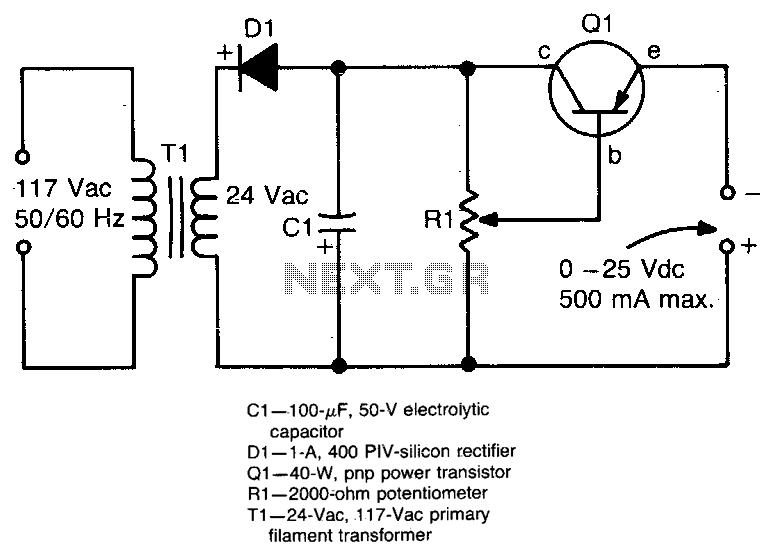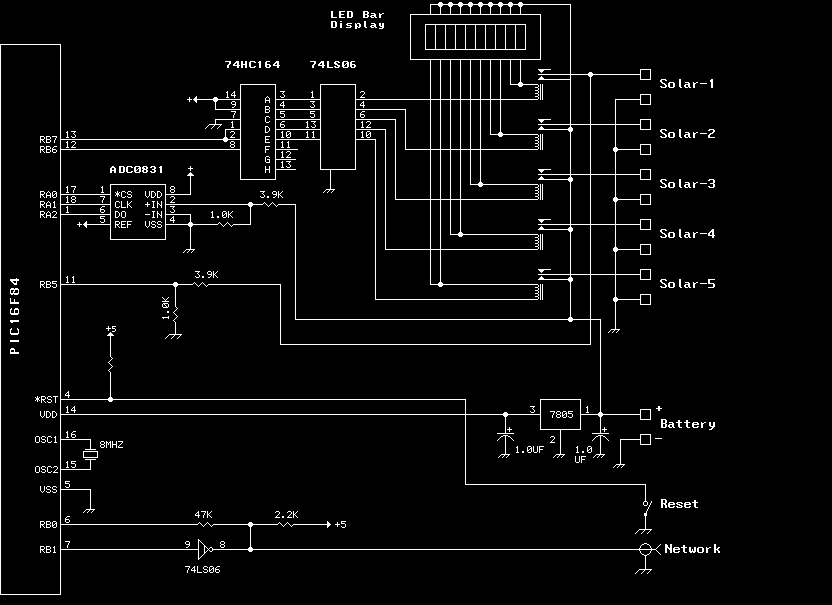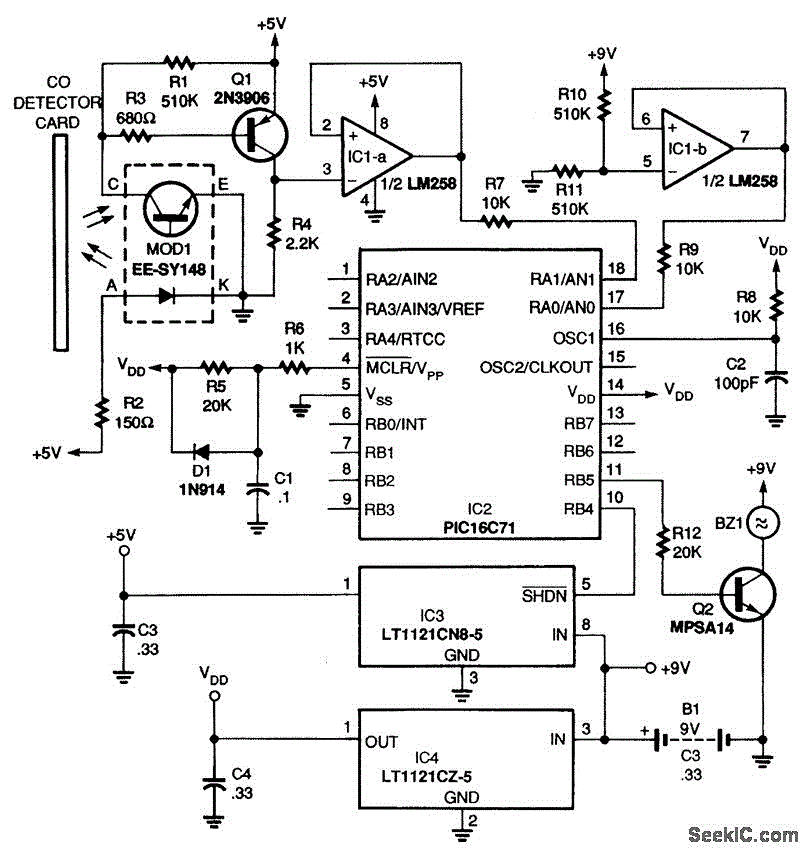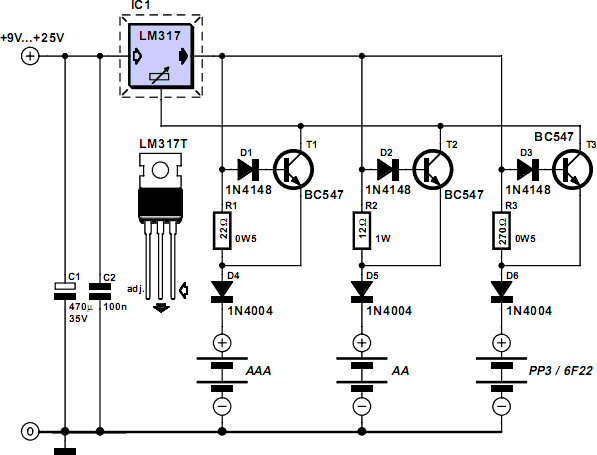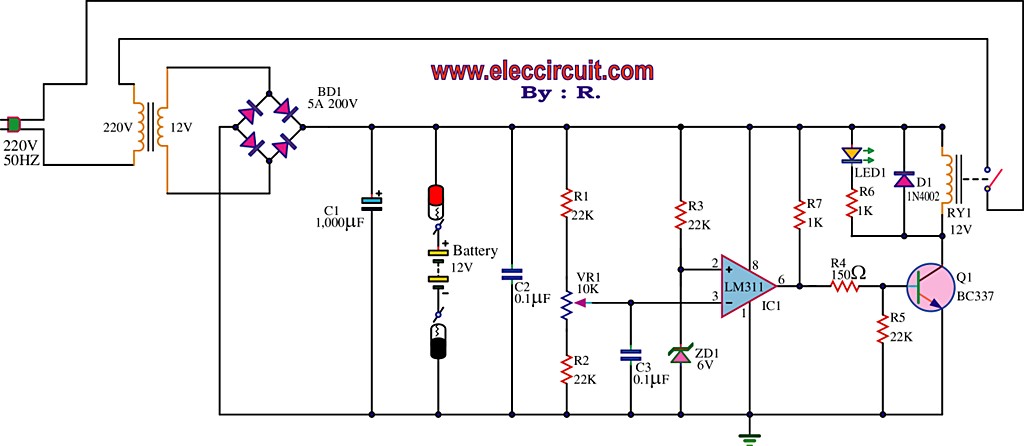
Car Battery Charger
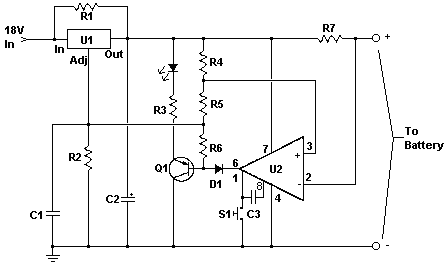
This charger will quickly and easily charge most any lead acid battery. The charger delivers full current until the current drawn by the battery falls to 150 mA. At this time, a lower voltage is applied to finish off and keep from over charging. When the battery is fully charged, the circuit switches off and lights a LED, telling you that the cycle has finished.
The described charger circuit is designed to efficiently charge lead-acid batteries while preventing overcharging, which can significantly extend battery life and performance. The primary components of the charger include a transformer, rectifier, voltage regulator, current sensing resistor, and an LED indicator.
The transformer steps down the AC voltage from the mains supply to a lower AC voltage suitable for charging the battery. The output of the transformer is then fed into a rectifier, typically a bridge rectifier configuration, which converts the AC voltage into pulsating DC voltage. This pulsating DC is then smoothed using a filter capacitor to provide a steady DC voltage to the battery.
The charging process begins with the full current output from the charger. The circuit employs a current sensing resistor in series with the battery, which allows for monitoring the current flowing into the battery. As the battery charges, its internal resistance increases, causing the current to decrease. The charger is designed to deliver full charging current until the current drawn by the battery drops to 150 mA.
At this threshold, a voltage regulator or control circuit is activated to switch to a lower voltage output. This lower voltage is essential for the final charging stage, often referred to as the "trickle charge" mode, which carefully maintains the battery's charge without risking overvoltage conditions that could damage the battery.
When the battery reaches its full charge, the current will drop significantly, and the control circuit will detect this condition. At this point, the circuit will switch off the charging output entirely. An LED indicator is incorporated into the circuit to provide visual feedback. When the charging cycle is complete, the LED lights up, signaling that the battery is fully charged and that the charger can be safely disconnected.
This charger design emphasizes safety and efficiency, ensuring that the battery is charged quickly without exceeding its voltage or current limits, thereby promoting longevity and reliability in lead-acid battery performance.This charger will quickly and easily charge most any lead acid battery. The charger delivers full current until the current drawn by the battery falls to 150 mA. At this time, a lower voltage is applied to finish off and keep from over charging. When the battery is fully charged, the circuit switches off and lights a LED, telling you that the cycle has finished. 🔗 External reference
The described charger circuit is designed to efficiently charge lead-acid batteries while preventing overcharging, which can significantly extend battery life and performance. The primary components of the charger include a transformer, rectifier, voltage regulator, current sensing resistor, and an LED indicator.
The transformer steps down the AC voltage from the mains supply to a lower AC voltage suitable for charging the battery. The output of the transformer is then fed into a rectifier, typically a bridge rectifier configuration, which converts the AC voltage into pulsating DC voltage. This pulsating DC is then smoothed using a filter capacitor to provide a steady DC voltage to the battery.
The charging process begins with the full current output from the charger. The circuit employs a current sensing resistor in series with the battery, which allows for monitoring the current flowing into the battery. As the battery charges, its internal resistance increases, causing the current to decrease. The charger is designed to deliver full charging current until the current drawn by the battery drops to 150 mA.
At this threshold, a voltage regulator or control circuit is activated to switch to a lower voltage output. This lower voltage is essential for the final charging stage, often referred to as the "trickle charge" mode, which carefully maintains the battery's charge without risking overvoltage conditions that could damage the battery.
When the battery reaches its full charge, the current will drop significantly, and the control circuit will detect this condition. At this point, the circuit will switch off the charging output entirely. An LED indicator is incorporated into the circuit to provide visual feedback. When the charging cycle is complete, the LED lights up, signaling that the battery is fully charged and that the charger can be safely disconnected.
This charger design emphasizes safety and efficiency, ensuring that the battery is charged quickly without exceeding its voltage or current limits, thereby promoting longevity and reliability in lead-acid battery performance.This charger will quickly and easily charge most any lead acid battery. The charger delivers full current until the current drawn by the battery falls to 150 mA. At this time, a lower voltage is applied to finish off and keep from over charging. When the battery is fully charged, the circuit switches off and lights a LED, telling you that the cycle has finished. 🔗 External reference
